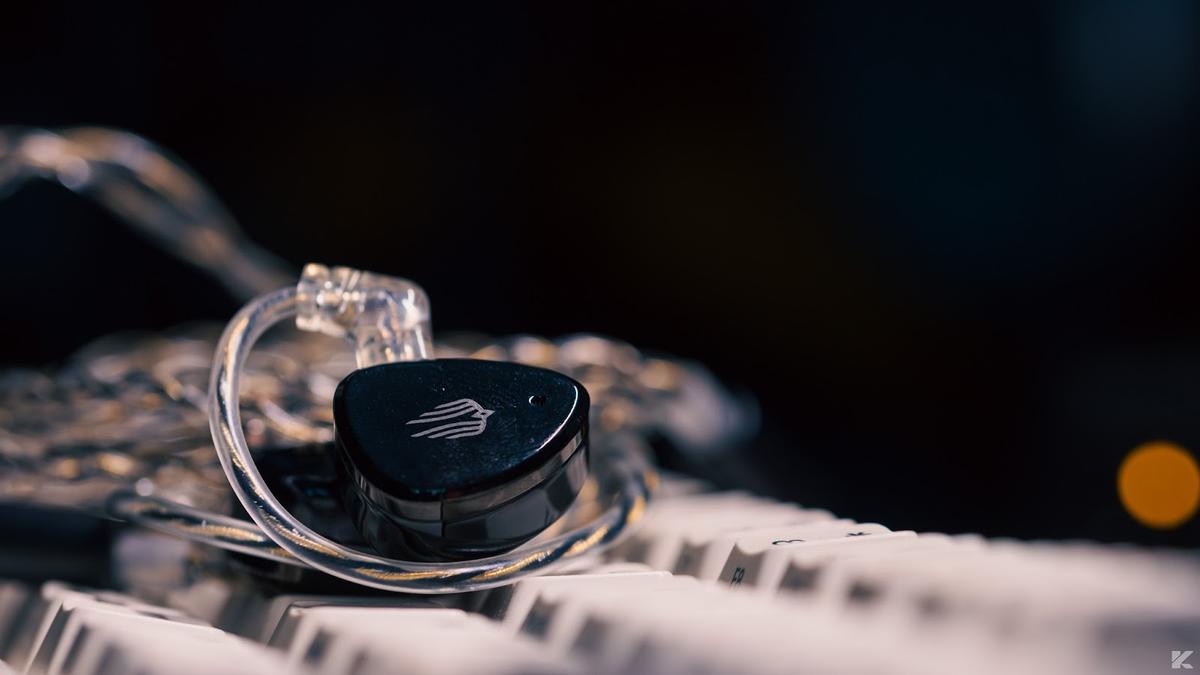Simgot EM6L work well across various genres but may sound too “vanilla” at times.
- Comfortable fit and suitable accessories
- Dense bass response with a good sense of slam
- Natural and inoffensive midrange tuning
- Good staging and imaging
- Upper-treble can be masked by the boosted bass
- Cheap-feeling shells are fingerprint-magnets
- Safe tuning may lack excitement for some
Simgot has primarily stuck with single dynamic drivers for its IEMs lineup. The EN1000, EA500, EW200, and EA1000 – all sport a single dynamic driver, and this driver setup has low-key become synonymous with the brand itself.
The EM6L stand apart in this regard, utilizing 5 drivers, including one dynamic driver and four balanced armatures. Will Simgot’s mastery in tuning a single driver carry over into the hybrid setup, or are there certain pitfalls one must be wary of?
Read on.
Unboxing and First Impression
Design and Build
The EM6L sport a boring design that fails to stand out.
It’s a black resin shell with a glossy black aluminum faceplate that feels more like glossy plastic. Frankly, I expected more from Simgot in this aspect since design is usually a strong suit of the brand.
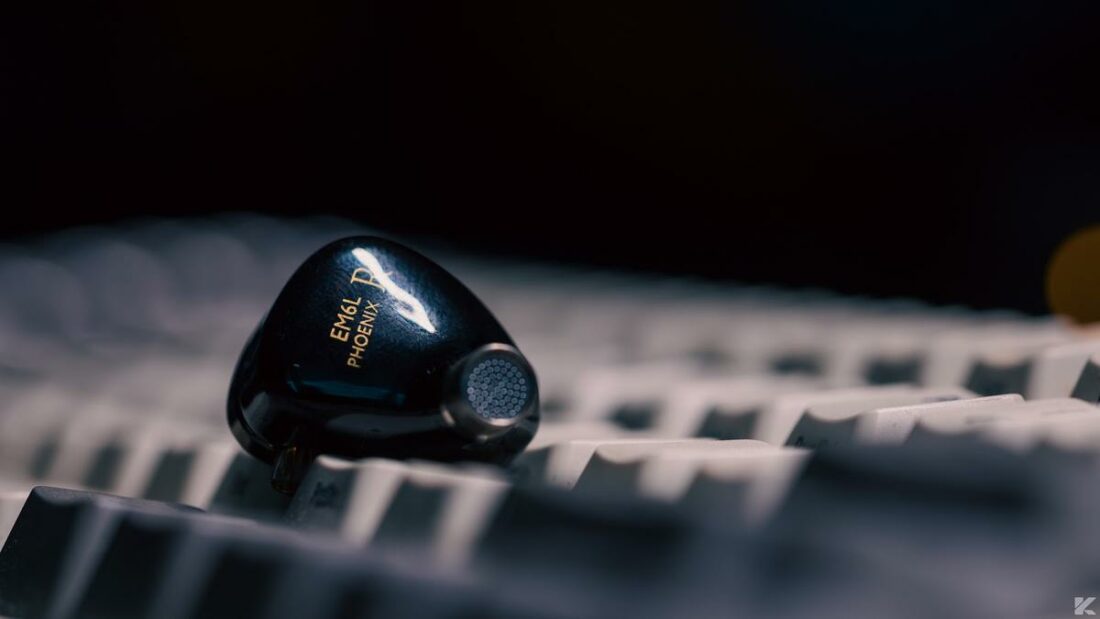
There is also a noticeable gap between the faceplate and the rest of the shell. The single vent on the back aids in pressure relief. Finally, there is the protruded 2-pin port, a pet peeve of mine.
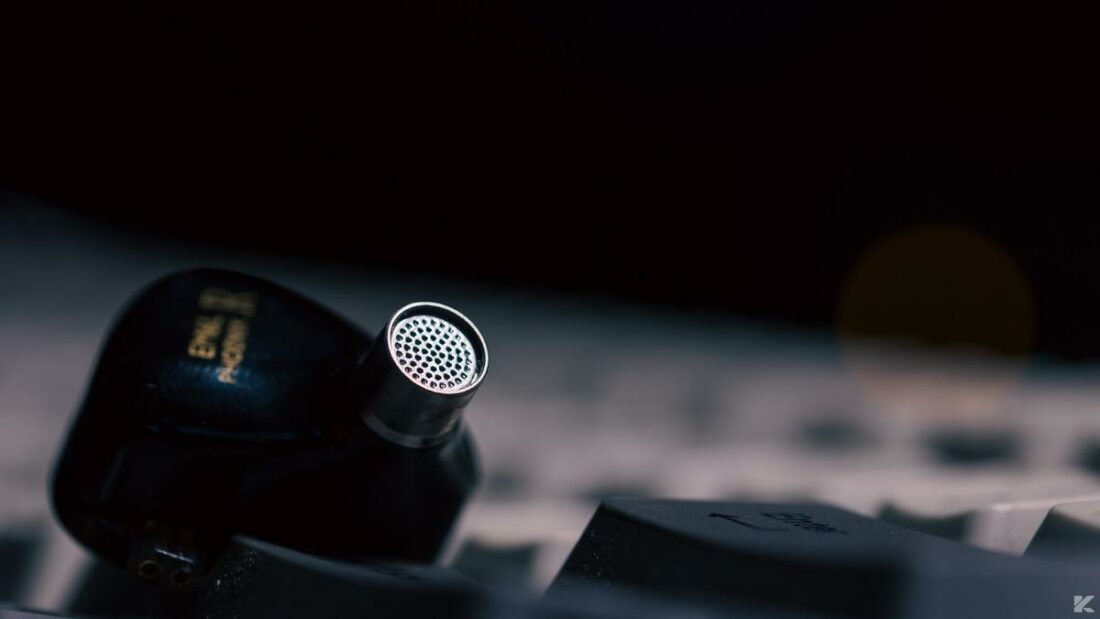
Overall, the design is as unremarkable as it comes – Simgot could have done better in this regard.
Cable
The stock cable has good ergonomics with pliable sheathing and low microphonics. Unfortunately, there is no option to terminate it as balanced during purchase, so you are stuck with a 3.5mm plug.

Comfort
Thanks to the lightweight shells, the EM6L are very comfortable. I was a bit wary of the thick nozzle, but it didn’t turn out to be much of an issue.
Under the Hood
Simgot goes for a hybrid setup with the EM6L, in stark contrast to its usual “single dynamic driver” offerings.
A single dynamic driver handles the lows, and four balanced armature drivers (two dual-BA drivers) take care of the mids and highs.
The 8mm dynamic driver has an LCP diaphragm. The details about the BA drivers are scarce, but I assume that they are not from Knowles or Sonion, as it’s customary to mention that in the promo materials.
How Do the Simgot EM6L Sound?
The Simgot EM6L have a warm-neutral tuning.
Despite the warmth in the mids, there is no noticeable bass bleed into the lower-midrange. Rather, the added warmth imparts some fullness to male vocals and snare hits.
At 103 db/mW sensitivity and 26 ohm impedance, the Simgot EM6L are well driven by most portable sources. However, tip-rolling is recommended to get the best results.
Bass
The bass of the EM6L primarily focuses on adding a sense of warmth to the entire signature while increasing the density of vocals and percussion instruments.
Sub-bass rumble is strong and fairly noticeable, as heard on Siamese Youth’s Nariyeh Thanei. Bass speed is pretty good, albeit very fast basslines have less separation than higher-tier dynamic drivers.
The bass texture could be better – sometimes, the bass tends to sound “one-note.”
Overall, the EM6L handle bass frequencies well, focusing on weight and richness instead of absolute agility.
Midrange
The lower-mids are warm and have some lushness that masks certain vocal intricacies, making poor masterings more pleasing to listen to.
The midrange tuning of the EM6L is well-balanced.
The upper-mids are not shouty at all while bringing female vocals front and center. Sharp guitar riffs or plucking of the strings does not have the sharpest of attacks and can sound a bit smoothed out. This aids in long-term listening while slightly decreasing a sense of “being there.”
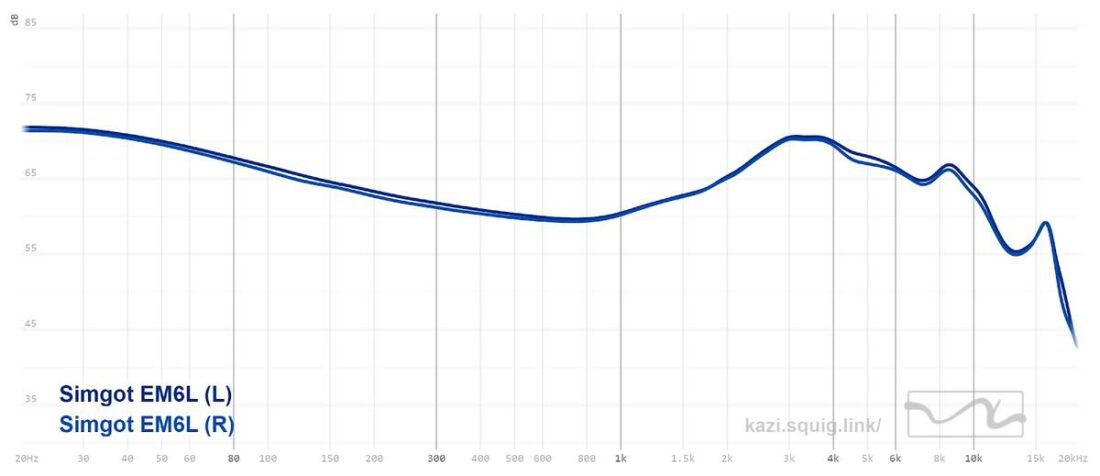
Treble
There is no noticeable emphasis in the 4 – 10kHz region, as the EM6L closely follows the Harman 2019 V2 target for the treble tuning.
The EM6L are no exceptions. Simgot, perhaps in an attempt to remedy this, added some emphasis in the upper-treble near 14kHz (to my ears), but the bass emphasis often masks that.
The high frequencies do not exhibit much “BA timbre” due to not being pronounced enough to notice such subtleties. However, in certain bass-light tracks with acoustic instruments, for example, you can notice the slight artificiality in the treble.
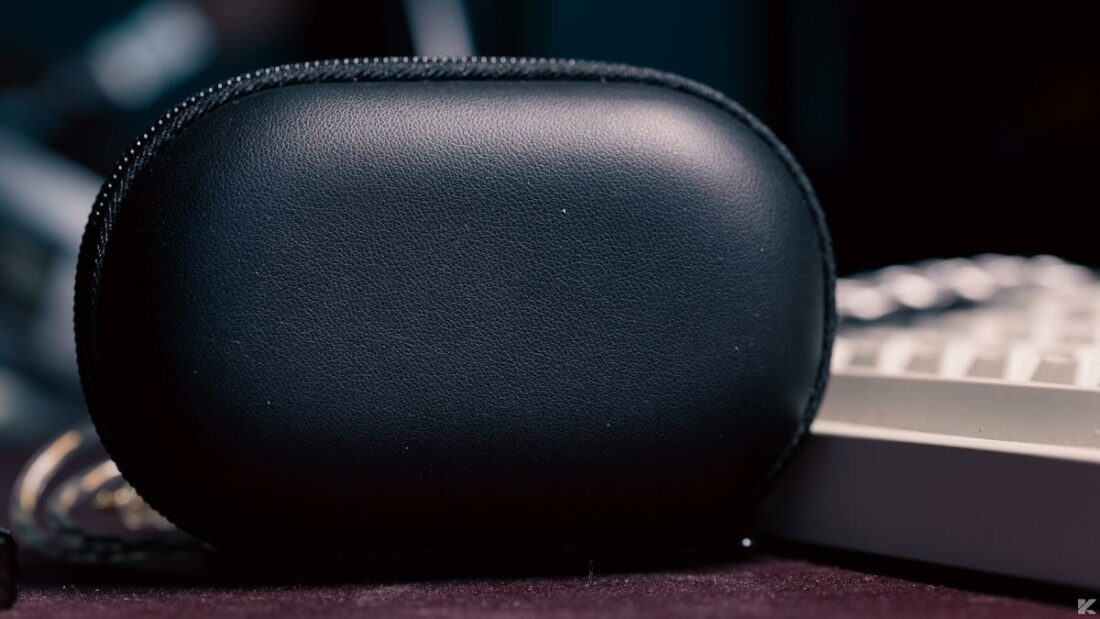
Technicalities
Overall, staging and imaging are excellent on the Simgot EM6L. Due to the limited upper-treble extension, you may find the sound slightly lacking in openness.
Macrodynamic punch is rendered well, while microdynamics (subtle changes in volume) are noticeable to a degree (though not as exaggerated as some TOTL IEMs).
Overall, the resolution is good but could be even better if the treble tuning was not so safe.
Comparisons
Vs Simgot EA500
The Simgot EA500 are priced lower than the Simgot EM6L, but this is a comparison many have asked for, so here you go.
The EM6L have resin shells, while the EA500 have metal shells. I much prefer the build of the EA500.
As for the sound, the bass and the upper-mids are boosted higher on the EM6L, but due to less treble emphasis, they tend to sound warmer and darker than the EA500.
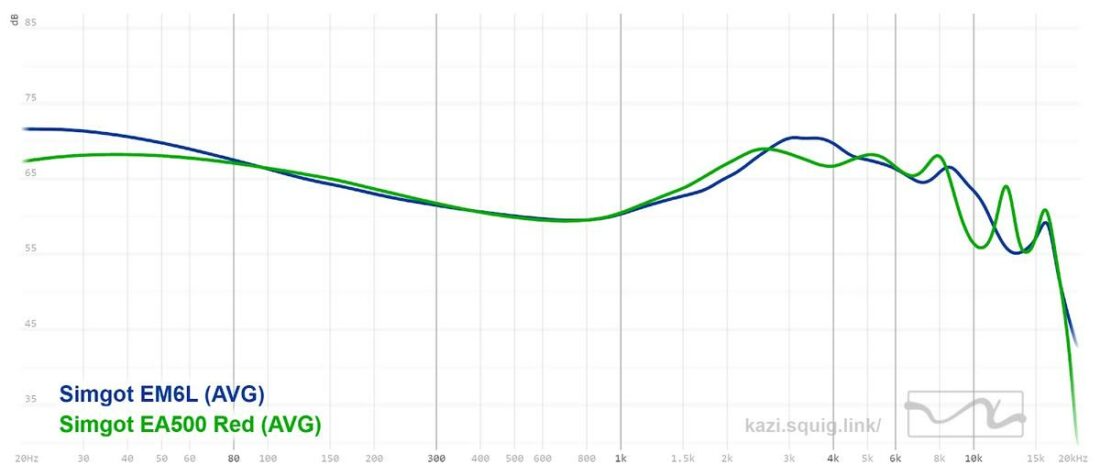
Staging and imaging are superior on the EM6L, while EA500 have better macrodynamic punch. Treble on the EA500 can come across as grainy, while EM6L suffer from some timbral issues. The ace up EA500’s sleeve is the tuning nozzle, which can be fun to experiment with. The EM6L offer no such flexibility.
Ultimately, I find the EM6L to have a smoother tuning overall, and their better staging and imaging add to the engagement factor. However, the EA500 still offer very good value, and the metal shells offer better durability in the long run.
Where to Buy
Who Should Buy This?
Listeners looking for Harman-oriented tuning and good technicalities, and those who are okay with the basic design and dark treble.
Final Thoughts
The Simgot EM6L are different from the rest of the lineup, be it in terms of a less premium build or the choice of drivers. However, the Harman-inspired tuning will be a hit among many, and the EM6L even improve upon the base tuning by bringing back some mid-bass into the mix.
My peeves lie solely in the build materials and the overly safe treble.
I cannot nitpick too much, as no other IEMs I have come across offer a more compelling package for the price.
The EM6L may not excel in a single area, but they offer excellent all-around performance that will be perfect for those new to the hobby or those looking for a versatile pair of IEMs on the go. For the more seasoned listeners, these may not stand out enough.
What’s in the Box?
- Simgot EM6L IEMs
- 3 pairs of silicone tips
- 3.5mm cable
- Carrying case
Technical Specifications
- Form: IEM
- Driver: 1 x 8mm LCP Dynamic Driver + 4 Balanced Armature drivers
- Impedance (Ohm): 26 ohms
- Sensitivity (dB): 103 dB/mW
- Weight (g): 7 g (per earpiece)
- Frequency Response (Hz): 8 Hz – 40 kHz
- Removable Cable: Y
- Source Jack: 3.5mm
- Cup/Shell Jack: 2-pin (qdc)
